Search Images
Browse Content (p. 802)
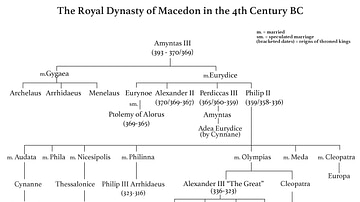
Image
Family Tree of the Royal Dynasty of Macedon in the 4th Century BCE
Family tree of the Royal Dynasty of Macedon in the 4th Century BCE. From Unearthing the Family of Alexander the Great. Grant (2019) p76. Used with permission from Pen & Sword Books.
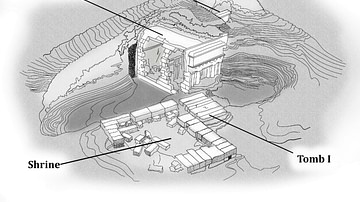
Image
Model of the Shrine & Tombs Under the Great Tumulus, Vergina
A model of the shrine and tombs under the Great Tumulus at Vergina. From Unearthing the Family of Alexander the Great. Grant (2019). p49. Used with permission from Pen & Sword Books.
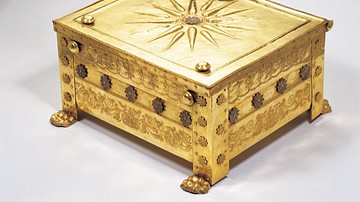
Image
Greek Larnax from the Royal Tomb in Vergina
The gold chest or "larnax" containing male bones from the main chamber of the royal tomb known as "Tomb II" in Vergina. The chest is decorated with the royal “Vergina Sun” or “Star” symbol, which has been associated with the Argead dynasty...
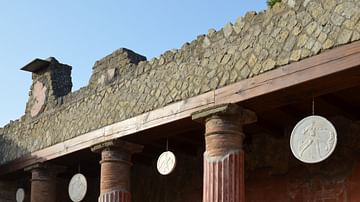
Image
The House of the Relief of Telephus in Herculaneum
The House of the Relief of Telephus is one of the largest houses in the excavated area of in Herculaneum covering about 1,800 sq. m. Its atrium is in the 'third style' with yellow panels and is fitted up with copies of marble discs called oscilla, suspended...
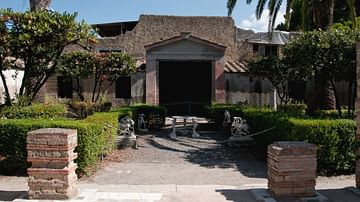
Image
The House of the Deer in Herculaneum
View of the terrace garden of the House of the Deer in Herculaneum which commanded magnificent views over the Bay of Naples. It has copies of marble statues which originals were found in the garden: two of a deer being attacked by dogs, one...
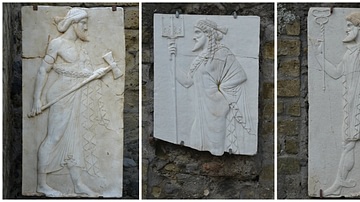
Image
Vulcan, Neptune, Mercury and Minerva, Herculaneum
Copies of Neo-Attic reliefs in the Sacred Area of Herculaneum depicting the four gods Vulcan, Neptune, Mercury and Minerva to whom a temple was dedicated.
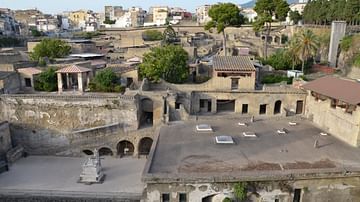
Image
View of the Suburban District of Herculaneum
View of the Suburban District of Herculaneum with the Suburban Baths at the bottom right and the Terrace of Marcus Nonius Balbus at the bottom left.
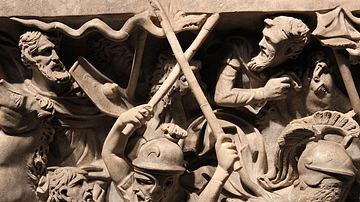
Image
Detail of the Portonaccio Sarcophagus
Detail of the Portonaccio Sarcophagus, which depicts Late Roman legionaries battling barbarians in the 3rd Century BCE. The piece was created between 172-175 CE.
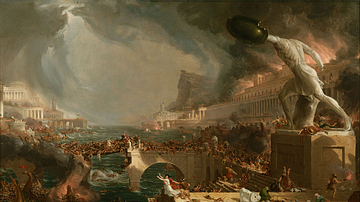
Image
The Course of Empire: Destruction
"The Course of Empire: Destruction" is the fourth in a series of five paintings by American painter Thomas Cole (1801 - 1848 CE). It was painted in 1836 CE and is part of the collection of New York Historical Society. The painting depicts...
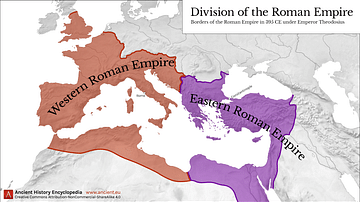
Image
Western & Eastern Roman Empire, 395 CE
This map shows the division of the Roman Empire into the Western Roman Empire and the Eastern Roman Empire, circa 395 CE under the reign of Emperor Theodosius I.